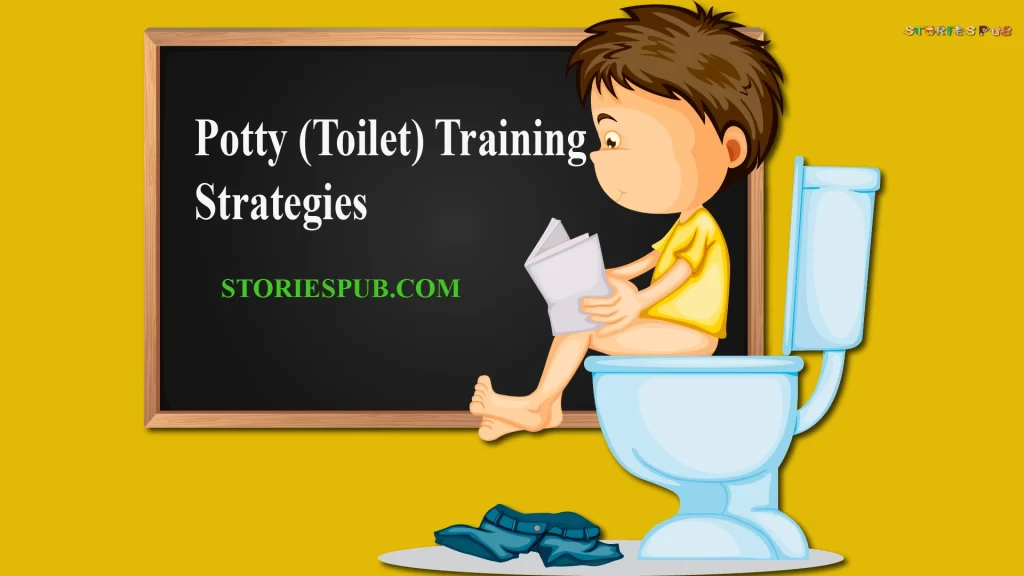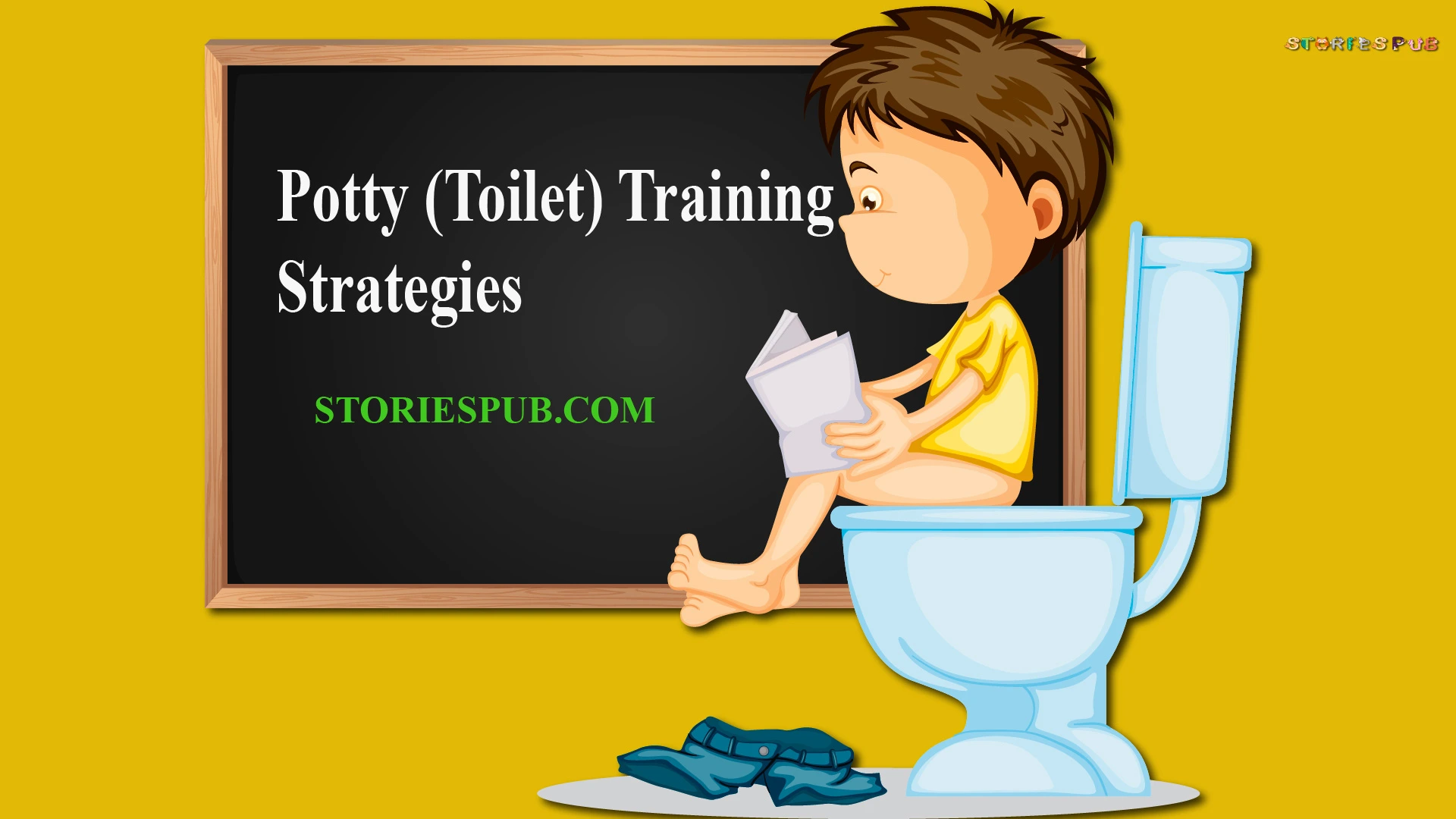20 PottyTraining strategies for Kids- New Parents

Potty training is arguably one of the most challenging tasks a parent will ever face, and it can feel overwhelming when you don’t know where to start. From choosing the right toilet seat to dealing with accidents, potty training can seem like an insurmountable obstacle for new parents who don’t know what strategies work best.
In this blog article, I’ll discuss different approaches to potty training that are designed to help make the process easier for both the child and the parent.
Why is timing everything when it comes to potty training?
The process of potty training can be daunting for both parents and children. There is a lot of advice out there on when the best time to start is, but ultimately it comes down to what works for your family. Some children are ready as early as 18 months old, while others aren’t interested until they are closer to three years old.
There are a few things to keep in mind when trying to figure out if your child is ready to start potty training.
Pay attention to their daily routines and see if they are showing signs of being aware of when they need to go (i.e., pulling at their diaper or holding themselves). If they seem uninterested or resistant, it may be best to wait a little longer.
Once you’ve determined that your child is ready, the next step is finding a method that will work for both of you. There are many different approaches, so it’s important to do some research and find one that will fit your lifestyle and parenting philosophies.
Remember, timing is everything when it comes to potty training. Start too early and you may end up with a frustrated child (and parent!). Start too late and you’ll be dealing with accidents and wet clothes. Find the right time for your family, and go from there!
When to start Potty training?
There is no perfect time to start potty training. It is different for every child. Some children are ready as early as 18 months old, while others may not be ready until they are 3 years old. The best way to know if your child is ready to start potty training is to look for signs that they are ready.
Signs that your child may be ready to start potty training include:
– Asking to be changed after a wet or dirty diaper
– Showing an interest in the toilet or in wearing underwear
– Staying dry for longer periods
– Being able to follow simple instructions
If you think your child is showing signs that they are ready to start potty training, the best thing you can do is to start slow and let them lead the way. There is no need to rush things. Potty training should be a positive experience for both you and your child.
20 Potty (Toilet) Training Tips for kids
Potty training can be a daunting task for any new parent, but don’t worry, we’re here to help! Here are some basic tips and strategies to get you started.
1. Start at the right time.
Starting potty training at the right time can make all the difference in your child’s success. It’s important to wait until your child shows signs of readiness, such as staying dry for longer periods, being able to pull their pants up and down, or showing an interest in using the toilet.
Starting too early can lead to frustration and setbacks while waiting too long can cause your child to become too attached to their diapers. Finding the right time to start can help your child feel confident and motivated to learn this important skill.
2. Use positive language when talking about potty training.
Using positive language can help make potty training a more enjoyable and encouraging experience for your child. Avoid using negative language, such as “Don’t have an accident!” or “You’re not doing it right.” Instead, use positive phrases like “Let’s try to use the potty!” or “You’re doing great!” This can help your child feel more confident and excited about using the toilet.
Additionally, using positive language can help create a positive association with using the potty, which can be beneficial in the long run.
3. Let your child pick out their own potty seat or toilet seat insert.
Allowing your child to pick out their own potty seat or toilet seat insert can make them feel more involved in the potty-training process. It can also help make the experience more fun and exciting for them. Take your child with you to the store and let them choose a potty seat or toilet seat insert that appeals to them.
This can make them feel more comfortable and confident using the toilet. Additionally, having their special potty seat or insert can help them feel more ownership over the process, which can be motivating.
4. Make it a fun experience – sing songs, play games, or read books while your child is on the potty.
Making potty training a fun experience can help your child feel more excited and motivated to use the toilet. Singing songs, playing games, or reading books while your child is on the potty can help distract them and make the experience more enjoyable. This can also help your child associate using the potty with positive experiences.
Additionally, making potty training a fun experience can help reduce the stress or anxiety your child may feel about the process. Encouraging your child to enjoy the experience can help them feel more comfortable and confident using the toilet.
5. Encourage your child to use the potty frequently
Encouraging your child to use the potty frequently, even if they don’t think they need to go, can help establish good potty-training habits. This can help prevent accidents and promote success in the long run. Encourage your child to use the toilet before leaving the house, before nap time, and before bedtime.
Additionally, encourage them to use the toilet regularly throughout the day. This can help them get used to the sensation of needing to go and help them develop good bathroom habits. Even if your child doesn’t feel like they need to go, encourage them to try. Over time, they will become more attuned to their body’s signals and learn when they need to go.
6. Use positive reinforcement
Using positive reinforcement, such as praise or rewards, can help motivate your child to use the potty successfully. When your child uses the potty on their own or has a successful trip to the bathroom, offer plenty of praise and encouragement. Tell them they did a great job and how proud you are of them.
Additionally, consider offering small rewards, such as stickers or a special treat, to celebrate potty training successes. This can help your child feel proud of their accomplishments and motivated to continue using the potty. Remember to keep the rewards small and consistent to avoid creating unrealistic expectations or an over-reliance on rewards.
7. Consider using a reward system for your child.
Using a reward system can be a helpful way to motivate your child during potty training. Consider creating a chart or other visual aid that tracks your child’s successes in using the potty. Each time they use the potty successfully, they can add a sticker or other small reward to the chart. Once they reach a certain number of successes, they can earn a larger reward or prize.
This can help your child see their progress and feel motivated to continue using the potty. Be sure to choose rewards that are age-appropriate and that your child is excited about.
8. Let your child run around without pants or diapers
Letting your child run around without pants or diapers can help them become more comfortable with the idea of using the potty. This can also help them become more aware of their body’s signals for needing to go to the bathroom. Encourage your child to spend time playing without a diaper or pants on, especially if you’re spending time at home. Consider putting a towel or waterproof pad down to make cleanup easier.
Additionally, be prepared for accidents and have cleaning supplies on hand to quickly and effectively clean up any messes. Over time, your child will become more comfortable with using the potty and accidents will become less frequent.
9. Use imitation – let your child see you or older siblings using the potty.
Children often learn through imitation, so letting your child see you or older siblings using the potty can be a helpful way to encourage them to try it themselves. When you or an older sibling uses the potty, invite your child to come with you and watch. Narrate the process so they understand what’s happening and how it works.
Encourage them to ask questions and be curious. Seeing others use the potty can help your child become more comfortable with the idea of using it themselves.
Additionally, consider using dolls or stuffed animals to demonstrate potty training for your child. This can be a helpful way for your child to practice and understand the process in a safe and low-pressure environment.
10. Teach your child the proper wiping technique.
Teaching your child, the proper wiping technique is an important aspect of potty training. Show your child how to wipe from front to back to avoid spreading germs and prevent infections. Encourage them to use toilet paper, and show them how much to use. You can also consider using moist wipes or a bidet attachment to help your child feel cleaner and more comfortable.
11. Be patient and calm – accidents will happen.
Accidents are a normal part of the potty training process, so it’s important to be patient and calm when they happen. Your child is still learning and may not always be able to hold it until they reach the potty. When accidents do happen, stay calm and reassure your child that it’s okay.
Don’t scold or shame them, as this can make them feel ashamed and less motivated to use the potty in the future. Instead, help them clean up the mess and encourage them to try again next time. Remember, potty training takes time and practice, so be patient and supportive throughout the process.
12. Avoid punishment or negative reinforcement for accidents.
It’s important to avoid using punishment or negative reinforcement when accidents happen during potty training. Children may feel embarrassed or ashamed when they have an accident, and scolding or punishing them can make them feel worse. Instead, focus on positive reinforcement when your child is successful in using the potty.
Use praise and rewards to encourage good behavior, and avoid focusing on the negative. When accidents happen, be patient and supportive, helping your child clean up the mess and reassuring them that it’s okay. By staying positive and avoiding punishment or negative reinforcement, you can help your child feel more comfortable and confident as they learn to use the potty.
13. Use a timer to remind your child to try using the potty every hour or so.
Using a timer is a helpful tool for reminding your child to try using the potty every hour or so. Set the timer for a specific amount of time, such as 60 minutes, and encourage your child to try using the potty when the timer goes off. This can help establish a routine and encourage your child to use the potty more frequently.
Be patient if your child doesn’t always go when the timer goes off, as they may not always feel the urge to go at that specific moment. Over time, your child will become more comfortable with the routine and may start going on their own without the timer.
14. Gradually increase the amount of time your child spends without a diaper or pull-up.
As your child becomes more comfortable using the potty, you can gradually increase the amount of time they spend without a diaper or pull-up. Start with short periods, such as 10-15 minutes, and gradually increase the duration as your child becomes more confident.
This can help your child learn to recognize when they need to go and build their independence. Be prepared for accidents as you increase the time without a diaper or pull-up, and be patient and supportive as your child continues to learn.
15. Use a step stool to help your child reach the toilet or sink to wash their hands.
Using a step stool can be a helpful tool during potty training. A step stool can help your child reach the toilet or sink to wash their hands after using the potty. It can also help your child feel more independent and in control of their potty routine. Make sure the step stool is sturdy and secure to avoid any accidents.
Encourage your child to use the step stool on their own, but be available to help if needed. Over time, your child will become more confident using the step stool and may not need it as often.
16. Let your child pick out their special underwear once they’re ready to move on from diapers or pull-ups.
Once your child is ready to move on from diapers or pull-ups, let them pick out their special underwear. This can help make the transition to underwear more exciting and fun for your child. Take your child shopping for underwear and let them choose their favorite colors, patterns, or characters.
This can help your child feel more involved in the potty training process and give them a sense of ownership over their progress. Be prepared for accidents as your child gets used to wearing underwear, and be patient and supportive as they continue to learn.
17. Be consistent with the routines and procedures you establish.
Consistency is key during potty training. Establish a routine that works for you and your child and stick to it. This can help your child develop a sense of predictability and structure around using the potty. Be consistent with procedures as well, such as using the same words for going potty and wiping, or always washing hands after using the bathroom.
This can help your child understand the expectations and feel more confident in their abilities. Remember that consistency takes time and effort, but it can pay off in the long run with a successful potty-training experience.
18. Make sure your child is comfortable with their potty seat or toilet seat insert.
It’s important to ensure that your child is comfortable with their potty seat or toilet seat insert. This can make them more willing to use the potty and make the experience more enjoyable overall. Let your child pick out their seat, if possible, or try a few different options to see which one they prefer.
Make sure the seat is the right size for your child and fits securely on the toilet. You can also add cushions or covers to make the seat more comfortable. Remember that every child is different, so what works for one may not work for another. Keep trying until you find what works best for your child.
19. Encourage your child to communicate their needs
Encouraging your child to communicate their needs is key to successful potty training. One way to do this is to regularly ask your child if they need to use the potty. This can help them become more aware of their bodily functions and learn to communicate their needs more effectively. You can also encourage them to use certain words or phrases to let you know when they need to go.
Make sure to respond positively and praise them for communicating their needs, even if they don’t end up using the potty. This will help reinforce the importance of communication and encourage your child to continue to communicate their needs throughout the potty-training process.
20. Celebrate your child’s successes and progress, no matter how small.
The final point of the basics of potty training for kids is to celebrate your child’s successes and progress, no matter how small. Potty training can be a challenging process for both the child and the parent, so it’s important to acknowledge and celebrate any progress made.
Whether your child successfully uses the potty for the first time or simply tries to go without prompting, it’s important to give them positive reinforcement and praise.
This will help to build their confidence and encourage them to continue with their potty-training journey. Remember, every child is different and will progress at their own pace, so be patient, stay positive, and celebrate their successes along the way.
Conclusion
Potty training your little one is a huge milestone for both of you. With the right strategies, patience, and understanding, it can be an enjoyable experience! We hope that this article has provided you with some useful tips to help get started on potty training your child. Remember to take things slow and never force them into anything they’re not ready for. Celebrate their successes and setbacks alike—it will make all the difference in their big step toward independence. Good luck!
Hello Everyone, How did you like this (Parenting) Potty (Toilet) Training strategies for Kids- New Parents? if you like this article share your view in the comment box, and don’t forget to share this with your friends on Social Media so they can also redy this. For more keep visiting Storiespub.com.
Suggeted Articles =





